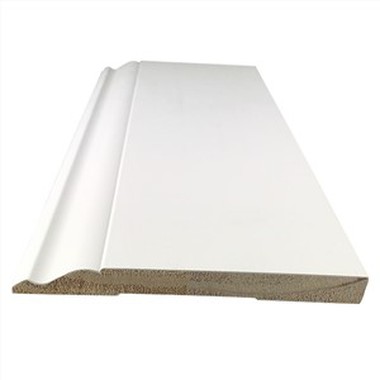How Does Wood Molding Compare to Other Materials like PVC or Plaster?
Mar 20, 2024
Wood molding has long been a staple in interior design, prized for its natural beauty, versatility, and timeless appeal. However, in recent years, alternative materials such as PVC (polyvinyl chloride) and plaster have emerged as contenders in the molding market. While each material offers its own set of advantages and disadvantages, understanding how wood molding compares to PVC and plaster can help inform decisions in interior design and construction projects.
Wood Molding:
Wood molding, crafted from solid wood or engineered wood products like MDF (medium-density fiberboard), exudes warmth, elegance, and authenticity. Its natural grain patterns and rich textures add character and sophistication to any space. One of the key advantages of wood molding is its ability to be customized and shaped to fit specific design preferences and architectural styles. Whether it's intricate crown molding, classic baseboards, or decorative trim, wood molding offers endless possibilities for creative expression.
In terms of durability, wood molding is known for its strength and longevity when properly maintained. It can withstand wear and tear, resist dents and scratches, and age gracefully over time. Additionally, wood molding can be refinished or painted to match changing décor trends or personal preferences, providing flexibility and versatility.
However, wood molding does have its drawbacks. It may be susceptible to moisture damage in humid environments, requiring proper sealing and maintenance to prevent warping or rot. Wood molding also tends to be more expensive than alternative materials like PVC or plaster, making it less budget-friendly for some projects.

PVC Molding:
PVC molding, made from synthetic plastic material, offers several advantages over traditional wood molding. It is lightweight, durable, and resistant to moisture, making it ideal for use in areas prone to humidity or moisture exposure, such as bathrooms, kitchens, and basements. PVC molding is also low-maintenance, requiring minimal upkeep to maintain its appearance.
Another benefit of PVC molding is its affordability. It tends to be more cost-effective than wood molding, making it a budget-friendly option for homeowners and builders. Additionally, PVC molding is available in a wide range of styles, finishes, and colors, providing versatility and flexibility in design choices.
Despite its advantages, PVC molding may lack the natural warmth and authenticity of wood molding. It can have a synthetic appearance and feel, which may not appeal to those seeking a more traditional or upscale aesthetic. Additionally, PVC molding may not be as easily customized or shaped as wood molding, limiting design possibilities in some cases.

Plaster Molding:
Plaster molding, also known as plaster cornice or plaster coving, offers a luxurious and elegant alternative to both wood and PVC molding. Crafted from gypsum plaster, plaster molding is highly sculptural and decorative, featuring intricate designs and ornate details that add grandeur and sophistication to interior spaces.
One of the standout features of plaster molding is its ability to be custom-made and handcrafted to suit specific design requirements. Skilled artisans can create bespoke plaster molding pieces that complement the architectural style and period of a building, whether it's classical, neoclassical, Art Deco, or contemporary.
Additionally, plaster molding is fire-resistant, durable, and long-lasting, with minimal maintenance required to preserve its appearance. It can be painted or finished to achieve a variety of effects, from matte to high-gloss, further enhancing its versatility in design.
However, plaster molding is often more expensive and labor-intensive to install compared to wood or PVC molding. It requires specialized skills and expertise to handle and install properly, adding to the overall cost and complexity of a project. Additionally, plaster molding may be more prone to damage from impact or moisture, requiring careful handling and maintenance.

In conclusion, wood molding, PVC molding, and plaster molding each offer unique advantages and characteristics in interior design. While wood molding provides natural beauty and customization options, PVC molding offers affordability and durability, and plaster molding exudes luxury and craftsmanship. Ultimately, the choice between these materials depends on factors such as aesthetic preferences, budget constraints, and practical considerations in specific design projects.







